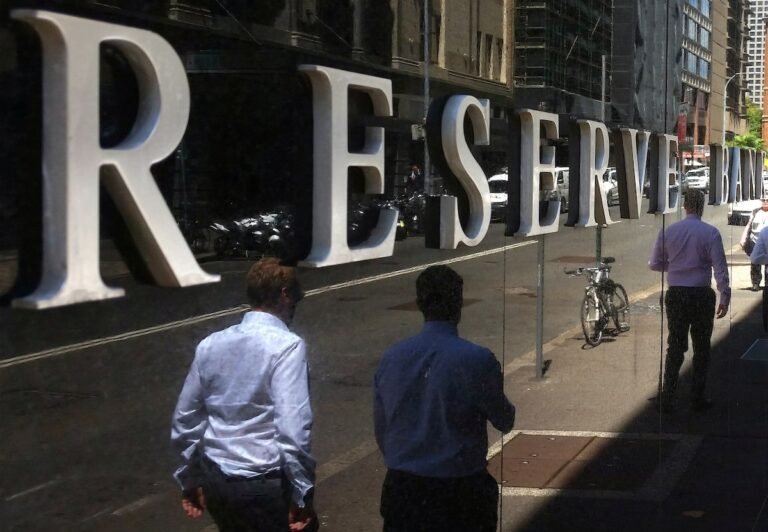Global markets are heading into what promises to be another volatile week, as investors fret stocks might be looking too pricey and even a reasonably solid earnings season so far hasn’t been able to soothe those jitters.
Here is your look at what’s big in markets in the coming week:
A TIPPING POINT
Around half of the world’s developed-market central banks have started cutting interest rates – the Bank of England did so on Aug. 1 and the Federal Reserve is teeing up a cut for September.
Global stocks, crypto and bonds have been rallying this year in giddy anticipation of central banks finally lowering interest rates, while inflation and economic growth gently tail off from their post-COVID highs.
So far, so good. Recession appears unlikely. Earnings have been decent, with more beats than misses. The problem is when assets are “priced to perfection”, it does not take much for disappointment to set in. And thin summer markets often mean more volatility.
Weaker readings of U.S. business activity and employment have prompted investors to assess whether rate cuts are a reflection of an economy that is weaker than they bargained for and it is time to take some money off the table.
MORE EARNINGS TO MULL
A U.S. corporate earnings season that has come in better than expected so far gets a fresh test in the coming week, with a number of high-profile reports due.
With more than half of S&P 500 companies having already reported, second-quarter earnings are on pace to have climbed 12.6% from a year earlier, LSEG IBES data showed on July 31. That is better than the 10.6% increase expected for the period on July 1.
So far, 78.4% of companies have topped analyst estimates for earnings, nearly the same beat rate as in the prior four quarters.
While most of the megacap companies will have reported already, other important results are expected in the days ahead. Those include industrial bellwether Caterpillar , media and entertainment giant Walt Disney, weight-loss drugmaker Eli Lilly and Super Micro Computer, which is at the centre of the market’s artificial intelligence excitement.
ROCKY PATH
A slew of economic releases from China will reveal how its shaky recovery is taking shape in the second half of the year and chances are, the picture still is not going to be particularly rosy.
The week begins with a private-sector survey on services activity, followed by trade data on Wednesday and a reading on consumer prices to round off the week.
Recent Chinese data continues to point to a gloomy outlook, and a growing sense of urgency in Beijing’s efforts to shore up the economy has since been reflected in its surprise rate cuts, with investors betting on more to come.
Officials will be keeping a close eye on Friday’s inflation report for clues on how much more needs to be done to bolster anaemic domestic demand, especially after policymakers signalled their support for more consumer-directed stimulus measures.
WEIGHTY RESULTS
Novo Nordisk, Europe’s most valuable company, releases its second-quarter results on Wednesday.
The company’s fortunes – and shareholder returns – have soared with the blazing success of its weight-loss drug Wegovy. Its market value has risen by $380 billion since it launched the anti-obesity injection three years ago, to $572 billion.
The top questions for investors and analysts are: manufacturing capacity and supply.
Novo and Eli Lilly and Co, the only other company, for now, with a rival obesity drug on the market, face the same challenge: increasing production of these medicines, which are delivered weekly in a self-injection pen.
Lilly, which reports on Thursday, has quickly gained ground on Novo since launching Zepbound in December.
Novo accounts for almost 4% of Europe’s STOXX 600, so its results carry more weight for the broader index than ever.
CPI FLIPS RBA SCRIPT
From an outside chance of a rate hike at the Reserve Bank of Australia’s Aug. 5-6 policy meeting, traders switched to pricing in the risk of a rate cut by year-end instead – all because of one soft inflation reading.
The Aussie dollar skidded to a three-month low and stocks surged to a record high, after core inflation unexpectedly slowed to a two-year low.
This will be very welcome news at the central bank, which would have been very reluctant to raise rates already at a 12-year high amid flatlining economic growth, moribund consumer spending and a weakening labour market.
Traders now put the odds of a rate cut at a coin toss for November, much sooner than the RBA’s assumed timing of possible easing – around the middle of next year should inflation continue to slow as desired.
Be smart with your money. Get the latest investing insights delivered right to your inbox three times a week, with the Globe Investor newsletter. Sign up today.


